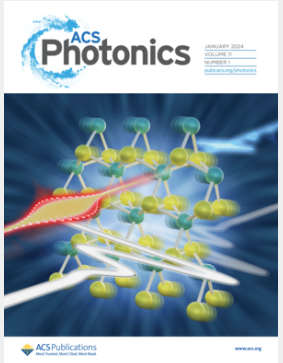High-Robustness, Compact Bi2O2Se-Based NIR Retinal Sensor for Bionic Vision Systems
IF 6.5
1区 物理与天体物理
Q1 MATERIALS SCIENCE, MULTIDISCIPLINARY
引用次数: 0
Abstract
The near-infrared (NIR) vision system has demonstrated unique advantages in bionic vision, particularly excelling in low-light and complex environments. The retinal sensor, as the core input component of the bionic vision system, is critical to the overall performance of the system. Nevertheless, significant obstacles persist in achieving high robustness and high integration. Here, the study develops a dual-terminal optoelectronic detector based on an Au/Cr/Bi2O2Se/Cr/Au structure. Benefiting from high-quality Bi2O2Se nanosheets, the device exhibits a high photoresponsivity of 1.8 × 103 A/W, a specific detectivity of 3.14 × 1011 Jones, and an external quantum efficiency of 2.47 × 105% at a wavelength of 915 nm. Furthermore, we developed a retinal sensor based on photodetectors. The exceptional photoresponsivity of the Bi2O2Se photodetectors significantly enhanced the robustness of the sensor. Additionally, we proposed a dual-mode architecture, offering a 72% reduction in the number of core components compared to traditional retinal sensor designs. More importantly, we apply the retinal sensor model to a bionic vision system, successfully achieving vehicle position recognition and gesture recognition tasks. This work provides a novel approach for designing next-generation retinal sensors, further advancing the development of bionic vision technology.

求助全文
约1分钟内获得全文
求助全文
来源期刊

ACS Photonics
NANOSCIENCE & NANOTECHNOLOGY-MATERIALS SCIENCE, MULTIDISCIPLINARY
CiteScore
11.90
自引率
5.70%
发文量
438
审稿时长
2.3 months
期刊介绍:
Published as soon as accepted and summarized in monthly issues, ACS Photonics will publish Research Articles, Letters, Perspectives, and Reviews, to encompass the full scope of published research in this field.
 求助内容:
求助内容: 应助结果提醒方式:
应助结果提醒方式:


